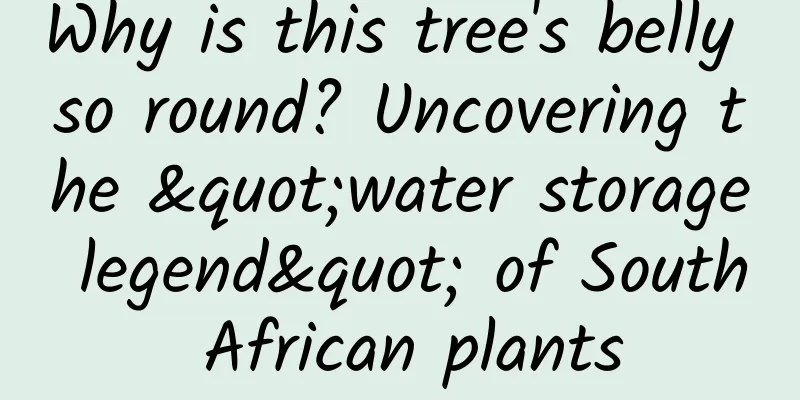"Yaodu" is now open for visits! What? The "Yao" in Yao, Shun and Yu?!

|
The Taosi site in Xiangfen, Shanxi is famous for its characteristic of being "infinitely close to Yaodu". You heard it right, the Yao in Yaodu is the famous Yao in Yao, Shun and Yu in history textbooks! Recently, the Taosi Site Museum was officially opened to the public. The archaeological excavation and research results of the Taosi site dating back approximately 4,300 to 3,900 years ago, which are collected in the museum, have also been unveiled to the public. Linfen Basin in southern Shanxi is located in the lower reaches of the Fen River. This fertile land gave birth to many early Chinese civilization tribes and city-states. Among them, Taosi, with its super-large city scale and surviving for four to five hundred years, is known as a well-deserved "top student" in the process of civilization as a cultural type of Longshan culture. In the treasures unearthed from the Taosi site, we can get a glimpse of the excellence of the Taosi people. Artifact wooden pole A lacquer rod, numbered IIM22:43, was unearthed from the royal tomb 2002IIM22 of the middle period of Taosi city site. This lacquer rod is alternating in black, green and red, forming a total of 44 color bands. What is particularly noteworthy is that the green bands No. 10 to 12 are separated by the red band No. 11. IIM22:43 Paint Rod Diagram According to previous research, one Taosi foot is equal to 25 centimeters, so the total length of color segments 1-11 is 39.9 centimeters, which is equal to 1.596 Taosi feet, very close to the record in "Zhou Bi Suanjing" that "the shadow of the summer solstice is one foot and six long"; the total length of color bands No. 1 to No. 33 is 141.6 centimeters, or 5.664 feet, which is the length of the shadow on the vernal and autumnal equinoxes. If we move the pole forward starting from the top of a full pole, the length of the color bands No. 1 to 38 is 157.4 cm, plus the total length of the first pole is 180 cm, the total length is 337.4 cm, 13.496 feet, which is very close to the record in the Zhou Bi Suanjing that the length of the winter solstice sundial is 337.5 cm, or 13.5 feet. It is inferred that the lacquer rod in IIM22:43 is a guichi in the sun shadow measurement instrument system. Combined with a standing table unearthed in Taosi, the lacquer rod and the standing table form a complete set of guibiao measurement instruments. When measuring, first stand the table upright on the ground, then place the ruler horizontally on the ground, and see where the shadow of the pole is on the ruler at noon. The length of the shadow is measured accordingly, and the solar term is determined. The gnomon is an important tool for measuring the sky and the earth, and not everyone can own it, which proves the noble status of the tomb owner. The people of Taosi already had an awareness of astronomy and geography, and wanted to know how big the sky is and how wide the earth is. Restoration table usage scenario Neolithic Nobles Concert There are records of "eight musical instruments" in ancient Chinese books before the Qin Dynasty. The eight musical instruments refer to eight types of musical instruments made of eight materials: gold, stone, earth, leather, silk, wood, gourd and bamboo . Five of them were unearthed at the Taosi site: bronze bells belong to gold, stone chimes belong to stone, pottery drums belong to earth, and crocodile drums and prayers belong to wood. The Taosi bronze bell is the sound of metal and stone. It has been identified as being made of red copper. It is the earliest composite copper ware known in Chinese history and also the earliest metal musical instrument known in Chinese history. The appearance of the Taosi bronze bells indicates that the composite mold casting technology had been mastered in the Longshan period in the Central Plains, which had made technical preparations for the emergence of bronze ritual vessels. Crocodile drum, crocodile is the ancient name of the Yangtze alligator. The drum cavity is made by hollowing out a tree trunk and then covered with crocodile skin. The drum body is more than 1 meter high and the outer wall was painted when it was first discovered. Musical instruments such as pottery drums, crocodile drums and stone chimes are the earliest palace and temple musical instruments, and are also important instruments exclusively used by the ancient royal family and princes. Each musical instrument found in Taosi may not be the earliest, but these musical instruments formed a complete set in Taosi, indicating that in the Longshan period, the Central Plains region already had a complete ritual and music system in its infancy. Earthen drum (a replica in the exhibition hall) and crocodile drum (restored) The Kingly Status of Taosi Dragon The painted pottery plate with coiled dragon pattern unearthed from an early large tomb in the Taosi cemetery is a round pottery plate with a painted dragon pattern. A total of four pottery plates of this shape have been cleaned out from the various tombs in the Taosi site. Painted pottery plate with coiled dragon pattern Looking closely at this pottery plate, we can see the intertwined figures of snakes and crocodiles: the dragon in the plate is coiled like a snake, spitting out a long letter from its mouth, with its head in the outer circle, its body curled inward, and its tail in the center of the plate; it has the same scales and armor patterns as a crocodile, a very long snout, and rows of sharp teeth; the left and right sides behind the head are forked like the tail part of a fish fin. The most significant feature of the dragon image is that it is a combination of various "spiritual animals". The Taosi dragon has the rudiments of a "dragon" and is related to the dragons of the Xia, Shang, Zhou and later dynasties. Archaeologists speculate that the Taosi dragon coil is different from daily practical objects and should be a sacrificial vessel used for sacrifice. The coiled dragon pattern is basically consistent with the image of Jiaolong, Helong, Chijiao, Chilong, or red snake described in ancient documents, and is likely to be a symbol of a clan or tribe. There are many myths and legends about dragons in ancient China. According to "Shangshu·Shun Canon" and "Shiji·The Basic Annals of the Five Emperors", during the time of Yao and Shun, there were clans and tribes named after dragons. "Yaodu Pingyang" was a tribe with a red dragon as its totem and Taotang as its name. Mysterious symbols The flat pot with the word "Wen" written in red was unearthed from an ash pit numbered H3403. Ash pits are pit-shaped relics left over from the activities of our ancestors , including garbage pits, sacrificial pits, artifact pits, storage pits, burial pits, traps, etc. When it was discovered, this gray pottery flat pot was already in a dilapidated state. After investigation, it was found that the flat pot had the typical characteristics of the flat pot of the late Taosi culture, dating back about 4,000 years. There was a word "文" on the side of the bulging belly on the front of the flat pot, which is very similar to the word "文" in oracle bone script and bronze script in shape and structure. Scholars have basically no objection to the word "文", and believe that it should be a compliment. Therefore, the red characters on the flat pot are at least 700 to 800 years older than the oracle bone inscriptions of Yinxu. What makes scholars puzzled is the symbol on the back of the flat pot. Is this symbol a word? Scholars have proposed a variety of interpretations of this symbol: 昜, 邑, 尧, 命, etc., but some scholars believe that this symbol is not a word at all. However, based on the brokenness of the flat pot and the characters on it, some scholars have inferred that it was probably a divination or sacrificial instrument. Although there is no conclusion yet, this has completely changed the fate of the flat pot: it is not an ordinary pottery pot, but a physical evidence of ancient civilization. After more than 40 years of archaeological research, an ancient city dating back 4,000 years has emerged from the dust of history and is now before you and me: we can decipher the calculation of time on a lacquered pole; listen to the ancient music in the bronze bells, stone chimes, pottery drums and alligator drums; see the original imagination of dragons in the dragon coils; and find clues to text in the flat pots... Every detail makes us feel as if we are in that distant era, feeling the weight and charm of history. Author: Xiao Qing, former editor of Global Exploration magazine Qu Qu is a member of the China Science Writers Association and the Jiangsu Science Writers Association. Review expert: Song, Yuan and Ming Dynasty Associate Professor, Institute of History of Science and Cultural Heritage, University of Science and Technology Beijing Deputy Director of the Institute of Science, Technology and Culture Editor: Dong Xiaoxian |
<<: What? The northeastern part of the Qinghai-Tibet Plateau has entered the "Early Anthropocene"! ?
>>: Who said no one eats this bean in China? This bean is really good... Try it now!
Recommend
A must-read for the start of the school year! Don’t let your children stray into these food “traps” around campus →
Dear parents and students, the horn of the new se...
Why do plants grow thorns? The answer lies in the Qinghai-Tibet Plateau
The "beauty" of the plant world is ofte...
180,000 trees! Why do we need to plant Haloxylon ammodendron to prevent wind and fix sand?
Review expert: Dong Wenpan, associate professor o...
Activity fission growth strategy!
In the era of mobile Internet, the topic that mar...
How much does it cost to join the Lanzhou Hotel Mini Program? What is the price for joining Lanzhou Hotel Mini Program?
How much does it cost to join a hotel mini progra...
Dingdong Maicai Product Analysis
On June 9, 2021, Dingdong Maicai was officially l...
Amazing marine diatoms! Scientists discover new mechanism of diatoms using light energy
Produced by: Science Popularization China Author:...
China Automobile Dealers Association: Used Car Weekly Report from November 8 to 14, 2021
1. Weekly transaction trend of used cars in Novem...
Beware of scammers! These 8 diseases cannot be cured once contracted, and trusting folk remedies can be fatal
Once they are diagnosed with a disease, many pati...
Are you a “rational fan” of calcium?
Calcium is the most abundant mineral in the human...
What do you learn in seo? How do beginners learn SEO?
SEO technology, most people know that companies n...
How can educational and training institutions operate well during the Spring Festival? Take this activity plan away quickly!
What does the Spring Festival mean to consumers? ...
Lanzhou hotel reservation mini program functional requirements, which hotel reservation mini program development company is best?
Nowadays, the hotel industry is no longer limited...
CCTV 315 Gala complained that mobile phone detection LED lights are unreliable
Last night's 315 party announced such a small ...









